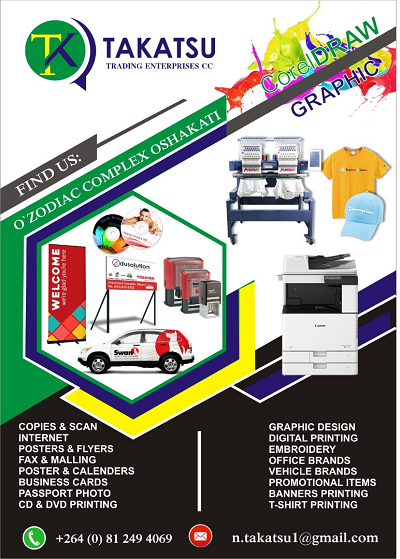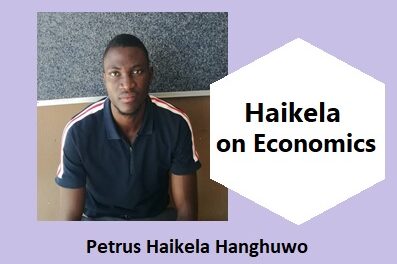
Stakeholder Engagement tools in the new normal
By Morna Ikosa [Thought Leadership]
The Covid-19 pandemic, though ferocious and deadly, has provided communicators tools to enhance stakeholder engagement.
The Greek philosopher Heraclitus once said “change is the only constant in life”. Those who are agile, dynamic, and flexible, rule the world. Communicators as social scientists, have a unique opportunity to set new precedence on how to effectively communicate with their stakeholders during this pandemic and beyond.
We have an open canvass, and we can go beyond the sky.
The quote: “Never waste an opportunity offered by a good crisis,” by Franklin Delano Roosevelt, is indicative of what we at the Government Institutions Pension Fund (GIPF) did, when it came to quickly adapting our stakeholder engagement strategy to adapt to the “new normal”.
We have been hard at work to find new ways to engage our diverse stakeholders.
Firstly, the entire GIPF stakeholder engagement department signed up as members of the International Association of Business Communicators (IABC). The IABC has been in existence since 1970. It serves professionals in the field of business communication, set global standards in communication through their educational offerings, certification, awards program, resource library, online magazine and annual World Conference (more information can be found on their website).
Through the IABC, the department garnered relevant information that has further enhanced its stakeholder engagement strategy. Similarly, the department had real-time access to other experienced and knowledgeable peers across the world, and attended webinars, which were insightful and thought-provoking. The skills transfer assisted the department to formulate initiatives ‘beyond the box’.
Secondly, GIPF embraced tools like Zoom and Microsoft teams, as its regional staff, who often, due to location, could not attend meetings and events. Now, with the heightened use of these technology platforms, they could join in real-time meetings, decreasing travelling expenditure and saving on time.
Their participation in meetings significantly improved, as they feel consulted, informed and engaged at all levels. They now could directly interact with the CEO and other senior management, without having to go through various structures, which too, broke some silo structures that might have been in place.
Those tools also provided the much-needed flexibility, for working nursing mothers, GIPF pensioners and members.
There is no doubt that the pandemic brought pandemonium in many people’s lives as they did not have enough time to re-organise and adapt to change, thus it was important for GIPF to do check-in sessions with the employees.
One approach that was adopted was to arrange for virtual team building sessions across the entire organisation. The virtual team building sessions proved to be a huge success. It provided useful insights to further improve team engagement.
Some of the feedback received was for the Fund to use platforms like Telegram and WhatsApp to communicate internally with staff. Pre-Covid-19, the intranet, emails, posters, flyers just to mention a few, were synonymous with internal communication. With Covid-19 however, GIPF soon realised that short, emotive videos on platforms where staff are already engaged proved to be effective.
The GIPF pensioners too were introduced to technology and adapted quickly. The Government Pensioners Association of Namibia also held their annual general meeting online which included pensioners across the country.
GIPF also revamped its external and internal newsletter, by incorporating several multimedia features, to accommodate various stakeholders. Soon the audio visuals will also be in the different Namibian languages. With the proliferation of digital tools and online platforms that are in use, it was important to prove how they could still provide return on investment for the Fund.
Thus, it was important for the GIPF to formulate a comprehensive media monitoring strategy. A media monitoring strategy is essential as it provides the following benefits by:
- Improving messaging by understanding, which messages resonate with your customers.
- Allowing one to garner market intelligence by tracking your competitors and key topics within your industry.
- Preventing a crisis or cuts down on response time.
- Assisting with issues management.
- Recognizing and capitalizing on trends in various industries as they crop up.
- Adjusting campaigns as they happen, especially if messaging is not resonating with the right audiences.
- Attributing to business value by better mapping media campaigns to specific business objectives.
- Helping your communicators to understand, which influencers are having the most impact on your brand.
- Enhances brand reputation on all your media platforms.
- Enhances resonance on all your media platforms.
- Sustaining positive brand sentiments on all your media platforms.
- Lastly, it helps to shape your brand’s digital influencers.
GIPF also runs extensive technology literacy campaigns for both external and internal stakeholders, as technology also poses numerous security risks, especially cyber related risks. It was important to educate stakeholders to create and use unique, secure passwords for each account, limit using public Wi-Fi, especially when dealing with confidential information, choosing secure cloud-based storage, installing firewalls and anti-virus software to mention a few.
It is advisable that companies upgrade their cloud-based storage tools, as this allows their employees to easily access information they require from home.
Some advisable tools that encourage collaboration from Simple Stakeholders (a management software company) that can assist with stakeholder engagement are: Real time chat software like Slack, and Discord.
Other notable ones are Cloud-based storage such as google drive, dropbox and one drive. Stakeholder management software like Simply Stakeholders and Darzin are also worth considering.
Lastly, although online communication has made things easier, it certainly cannot replace face to face communication. It is still vital that at least once a month, the team meets at the office for a face-to-face engagement.
To reduce Zoom meeting fatigue, perhaps one could arrange a lunch Zoom where people just have lunch together and talk (with videos on). Using emojis in written communication is also becoming popular, as so much gets misinterpreted in text.
GIPF is constantly looking for new ways to engage with its stakeholders, and we look forward to hearing from you.
If there are new ways that you feel the GIPF should consider in engaging with you, please do let us know at Tel: 061-205 1000 or inbox us on any of our social media platforms on Twitter, Instagram and Facebook.
– Ms Morna Ikosa is the Stakeholder Engagement Manager at GIPF.






